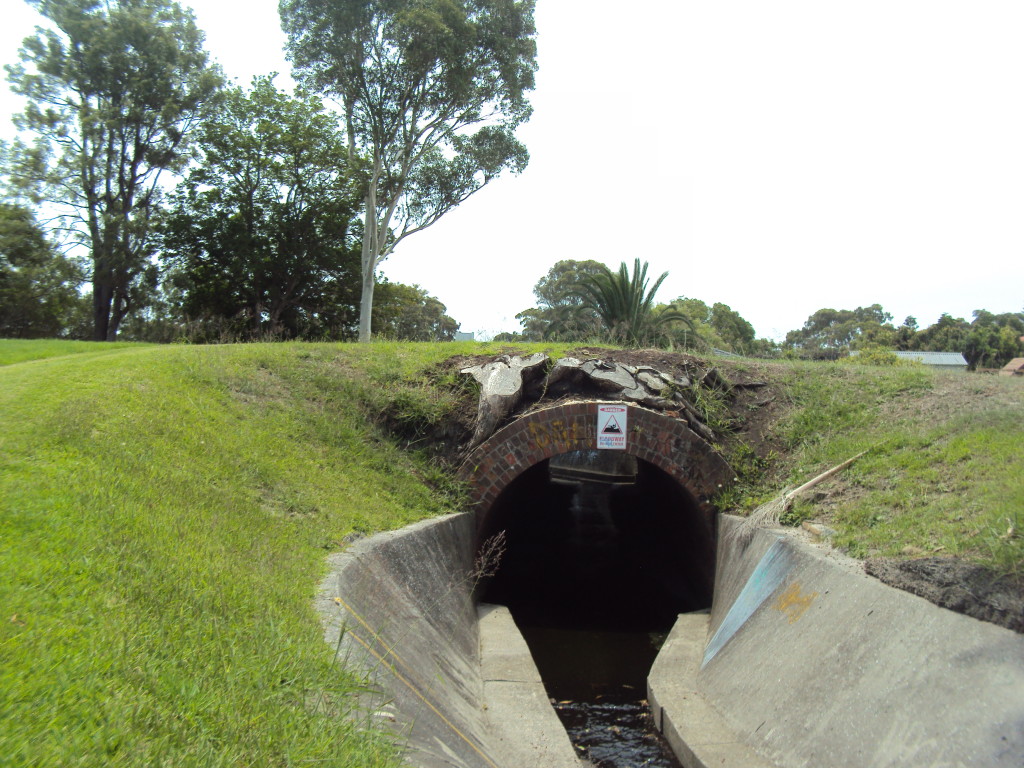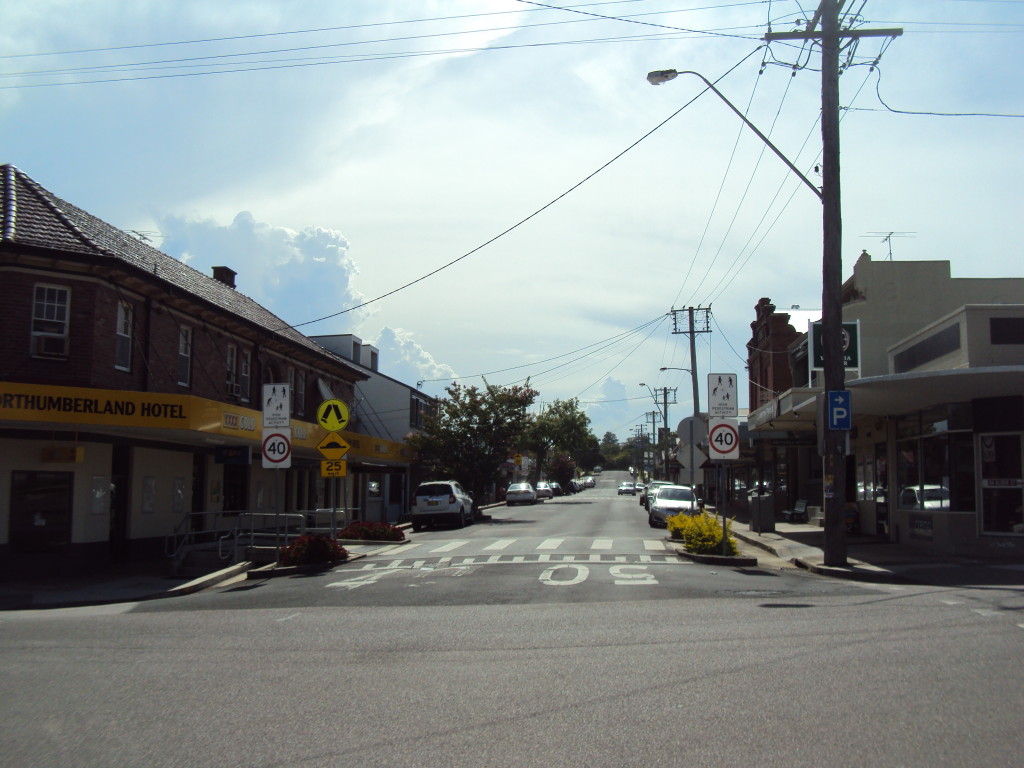A move of some furniture in our lounge room on Australia day, meant a temporary relocation of the stereo on to the floor. Of course, the cat immediately appropriated it as her personal heated cat throne. Here she is chilling out to Lucky Ocean’s Secret Steel.

Monthly Archives: January 2015
Relaxed possum
The possum in our shed that survived the roller door incident last year has settled in and is a pretty relaxed possum these days. Today I found it reclining flat on its back on a shelf in the shed with a very contented attitude. My daughter snapped this photo and then engaged in a bit of digital mischief to suggest the source of the contentedness.
Happy Australia Day weekend.
Bicycle bells
I was walking in town the other day past some traffic lights when a driver at the front of the queue must have got distracted and didn’t move off when the lights went green. The driver behind gave them a friendly wake-up toot on the horn. I know it was friendly because it was the merest infinitesimal toot, not a protracted drawn out kind of toot that is precursor to violent road rage. We seem to have a fairly well understood convention that the length of car horn toot is proportional to aggression.
 But bicycle bells are different …
But bicycle bells are different …
- Friendly middle aged man concerned for pedestrian safety wants to say ‘be careful I’m about to pass you’ … Ding.
- Psychopathic misambulist* expressing utter disdain for idiots in their way … Ding.
Sigh. Oh the inarticulateness of the humble bicycle bell.
* Not a real word (until now) – I just made it up – it means “pedestrian hater.”
Then and now – trees
Here’s a “Then and Now” whose results I wasn’t too pleased with, documenting the handiwork of the Ausgrid tree contractors who have been through Lambton recently.
I’m no arborist, so I’ll have to charitably assume they knew what they were doing, but the result sure is an ugly mess.
The only consolation is, as Mark MacLean points out, in the long run vegetation eventually wins.
A Tale of Two City Maps
When it comes to mapping our cities, Google Maps and Apple Maps are streets apart. No map is ever perfect, and the difference between Google and Apple is starkly emphasised when it comes to correcting errors. Here’s what happens …
Google Maps
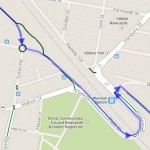 I notice that in getting directions for cycling from North Lambton to Wickham that the suggested route doesn’t take into account recently constructed cycle paths around Waratah Station.
I notice that in getting directions for cycling from North Lambton to Wickham that the suggested route doesn’t take into account recently constructed cycle paths around Waratah Station.
- I report the problem to Google Maps.
- One minute later I receive an e-mail acknowledgement that the report has been received.
- Four days later I receive an e-mail saying that my report has been reviewed and accepted, and that a correction to the maps will be made.
- Three months later I receive an e-mail saying that the correction is now live on Google maps.
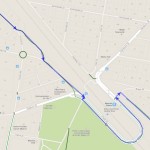 Now three months is fairly glacial in the digital age, but nevertheless, it was a very straightforward matter of problem observed, problem reported, problem corrected.
Now three months is fairly glacial in the digital age, but nevertheless, it was a very straightforward matter of problem observed, problem reported, problem corrected.
Apple Maps
 Now here’s what happens with Apple Maps when you report a problem, like this non-existent section of street in North Lambton …
Now here’s what happens with Apple Maps when you report a problem, like this non-existent section of street in North Lambton …
- I report the problem to Apple Maps.
- Nothing.
- Still Nothing.
- Three months later I report the problem again.
- Nothing again.
- Nothing, not even an acknowledgement the report has been received.
- Two years later, still nothing, not even the sound of crickets chirping, a complete and utter vacuum. Just as well for Apple that they can’t hear people scream in a vacuum.
Mark Maclean charitably suggests that Apple is engaging in a new cartographic discipline called ‘speculative topography’ – I have many other suggested names for Apple’s mapping endeavours, none of them as charitable as Mark’s.
My holiday historical adventure
A reflection on Then and Now
As a recently arrived resident of Lambton (coming all the way from North Lambton), I was aware that Lambton had its beginnings as a mining township. But where was the colliery? What remained of it?
When a strangler fig envelopes and outlives the tree that originally supported and strengthened it, the original tree decays away into nothingness, and the once strong tree is then only defined by what is not there, by the tree shaped void in the heart of the fig. Lambton colliery is like that. Opened in 1863, it closed 74 years later in 1936 and slowly faded away – buildings demolished, equipment removed, pits filled in, new streets laid out, housing erected, rail lines ripped up, and rail bridges torn down – the last disappearing act in 1966. Lambton colliery is discernible now only in shadowy remnants – the open space of Lewis oval where the colliery once stood, the slight dip in Hobart Rd where the old tramway passed under the colliery railway, the funny little jink in Howe St where the road veered to pass through the narrow gap of the railway bridge.
The only physical evidence of the colliery I could find was this culvert, at the western end of New Lambton Park, over which the colliery railway once ran.
With so little of Lambton’s colliery origin still visible, I began to think about what has changed and what has stayed the same in Lambton over the last 150 years. So with a two week break over Christmas from my usual employment, I set myself the challenge of every day visiting the location of an historical photograph, and as far as possible, replicating the original image. To exercise my body as well as brain, I added the constraint that the location had to be reached from my home by walking or riding a bike. The result was this series of 16 “Then and Now” photographic comparisons.
Some of the comparisons were striking in what has stayed the same – the rotunda in the park, the Council Chambers/branch library, Lambton Lodge (the home of Thomas Croudace the colliery manager), while other comparisons highlighted vast change – most notably a cricket pitch now laid out where men and boys once entered the earth to labour in the underground coal seams.
Although the colliery is now gone, the Lambton community that grew around it has survived and matured, a lasting legacy of coal mining origins.
Two final thoughts, as I think about the changes in Lambton over the last century and a half:
- Trams. Although I’m not old enough to remember trams in action, I wish they were still around. Maybe I’m a bit misty eyed about this and trams were actually, noisy, dangerous, unreliable, uncomfortable, and inconvenient? Maybe someone old enough to remember can enlighten me? Until then, I’ll continue to wish they were still here.
- Trees. In many of the photographic replications I attempted, it was difficult to see the similarities because ‘Now’ had trees where ‘Then’ had a barrenness driven by the never-ending demands for timber in domestic and industrial life. Trees – frustrating for my little project, but good for our community now.
Then and Now 16
Then and Now 15
1900
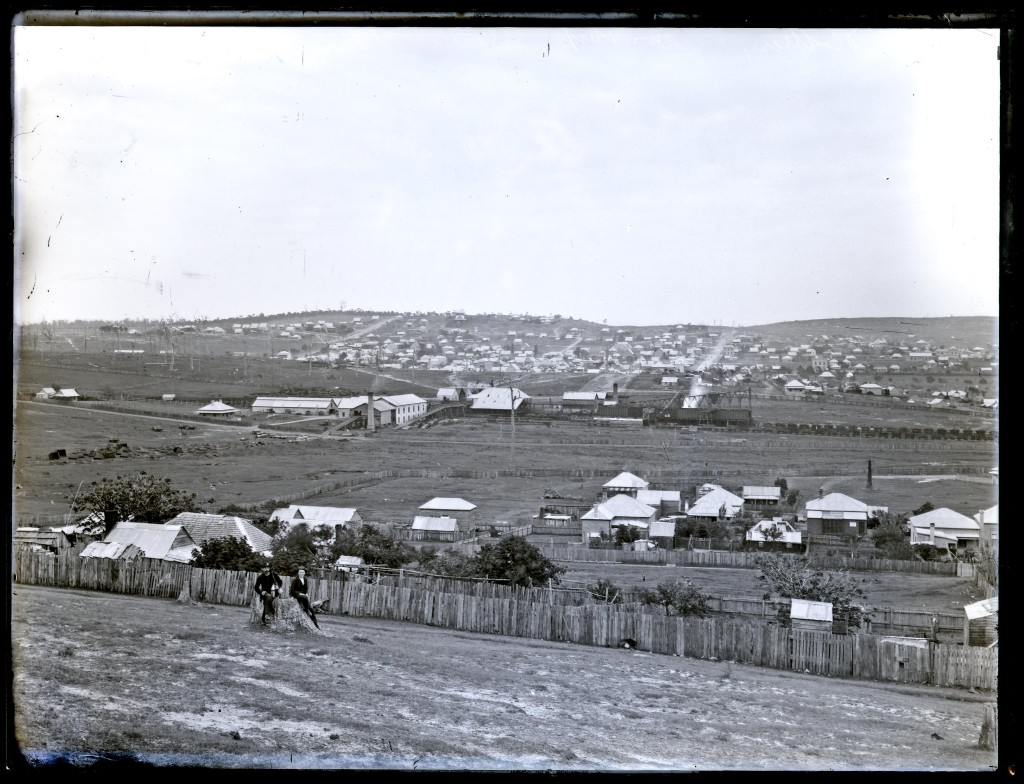
Lambton colliery and Lambton township, looking north from Russell Rd, New Lambton. Photo by Ralph Snowball. University of Newcastle Cultural Collections.
On the North Lambton hill in the background, three streets are visible going up the hill – on the left hand side is Dent St, on the right hand side is Morehead St, and the thinner shorter street in the middle is Grainger St.
2015
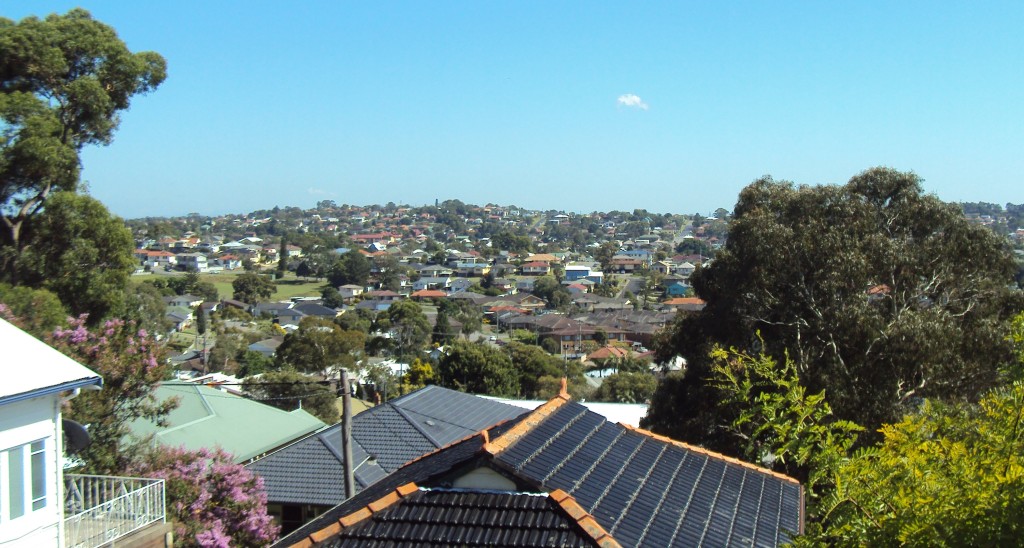
In the modern photo, Dent St and Grainger St are hidden by houses and trees, but Morehead St is still visble.


